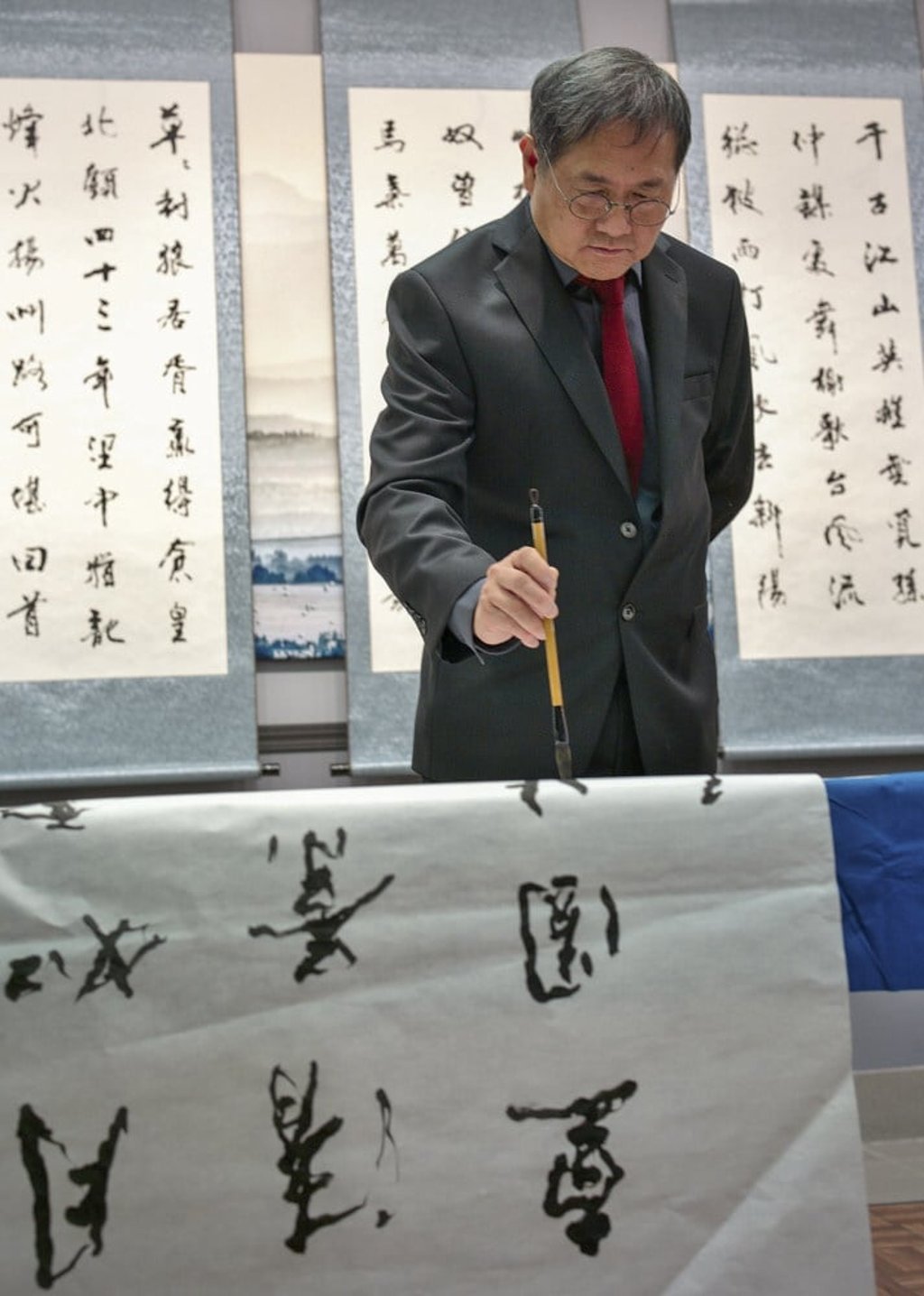Writing on the wall: Hong Kong’s MTR stations are retired architect’s ‘museum of calligraphy’
- Abe Au has gathered an international following for his distinctive brushstrokes in MTR stations
- Long a feature of Island line stations, his calligraphy will appear along newest Tuen Ma line

Regular passengers waiting for trains at many stations of the MTR’s Island line in Hong Kong are familiar with the distinctive Chinese calligraphic script in signage and designs on walls.
The vigorous running scripts known as xingshu have individual strokes that seem to flow and move. Some say the characters for “Tin Hau” appear to fly, while others seem to dance.
The calligraphy is the work of Abe Au Kit-tong, 71, a retired MTR Corporation architect who has been practising Chinese ink-and-brush writing every day since the age of seven. His work also appears on the platform walls of stations along the Tseung Kwan O line.

The Tuen Ma line is the city’s longest rail corridor running about 56km through 27 stations. The first phase, connecting Wu Kai Sha and Kai Tak by way of Tai Wai, Hin Keng and Diamond Hill, opened in February last year.